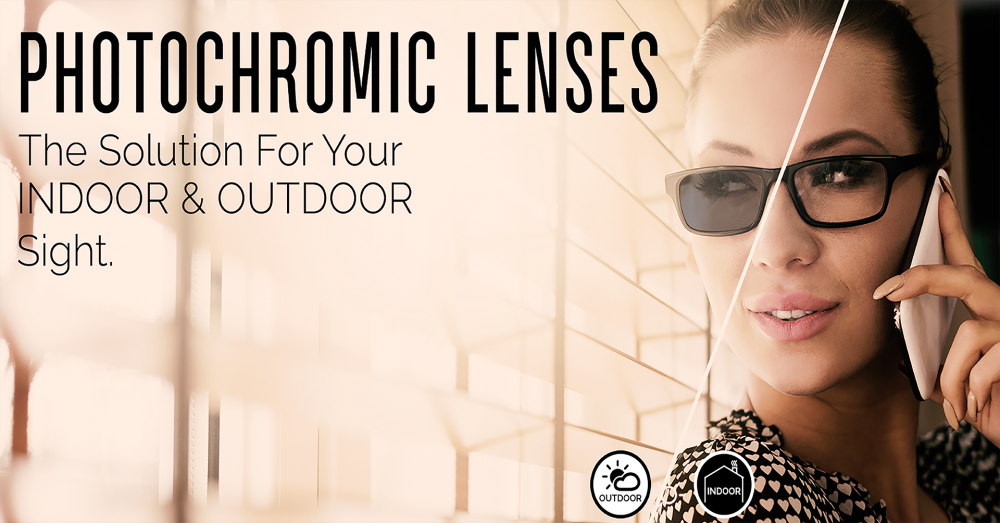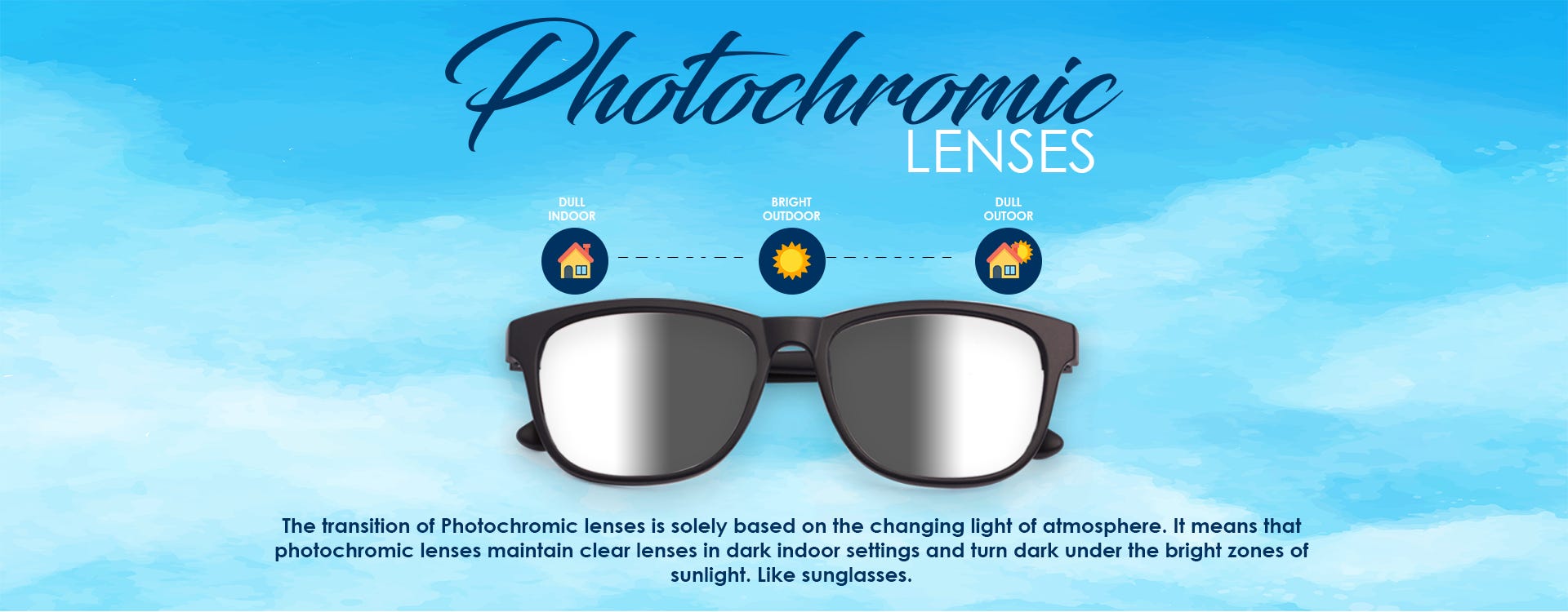
We often hear that the only constant in life is “change” and this connotation has to be expanded to say that “weather” is an agent of that consistently evolving element. No matter where we live, we cross our paths with the scorching sun rays or misty overcast clouds, bringing a change in our vision quality. To this day, the recipe was to remain entangled with multiple frames and use specs & sunglasses as per weather conditions. But, it’s quite not the solution but rather the baggage of carrying the commodity around. What’s the antidote: knowing that weather may glare out our vision with sunshine or timid it with uninformed darkness? It’s the self-tinting lenses that acquire readiness for the vision for two varying weather conditions, all on their own, with the ultimate precision.
Having the tact to balance the proportion of UV light, photochromic lenses follow a simple mechanism that allows lenses to initiate their self-tinting mode. This optical invention uses sulfur chloride molecules that react with the amount of UV light to change lens colors and set vision accordingly.
The main purpose of inducting photochromic lenses is UV protection which is the root of all outdoor vision problems. Therefore, photochromics do not self-tint indoors, exemplifying the need for UV light to activate their mechanism: likewise, they turn dark in a sunny landscape. It takes a minute for photochromics to shift colors from indoors to outdoor and vice versa.
From effortlessly attuning to the new shade of vision to sighting everything with searing clarity, photochromic lenses transform the way we handle the light that corresponds with vision There are numerous benefits to this self-tinting spec essential, however, its anti-glare element, both for indoor and outdoor, is its prime unique selling point for all spec wearers.
With Photochromic installed, we layer a boundary for UV rays that repeatedly enter our sight from artificial and natural sources. The photochromic lenses create a win-win path for the ever-changing weather: especially when we spontaneously quit the dull indoor and enter a vividly bright outdoor. It also irons out the burden of carrying 2-3 frames for varied lighting conditions.
Tips To Share:
1 - Within 90 seconds, 80% of lens tint shifts from light to dark and then transforms completely.
2 - However, to inverse this, it may take up to 1-2 minutes for transition lenses to become clear.
3 - It is noted with photochromic lenses that the dazzlingly warm weather may make tinting stagnant. Depending on weather intensity, the lenses change from light to dark.

